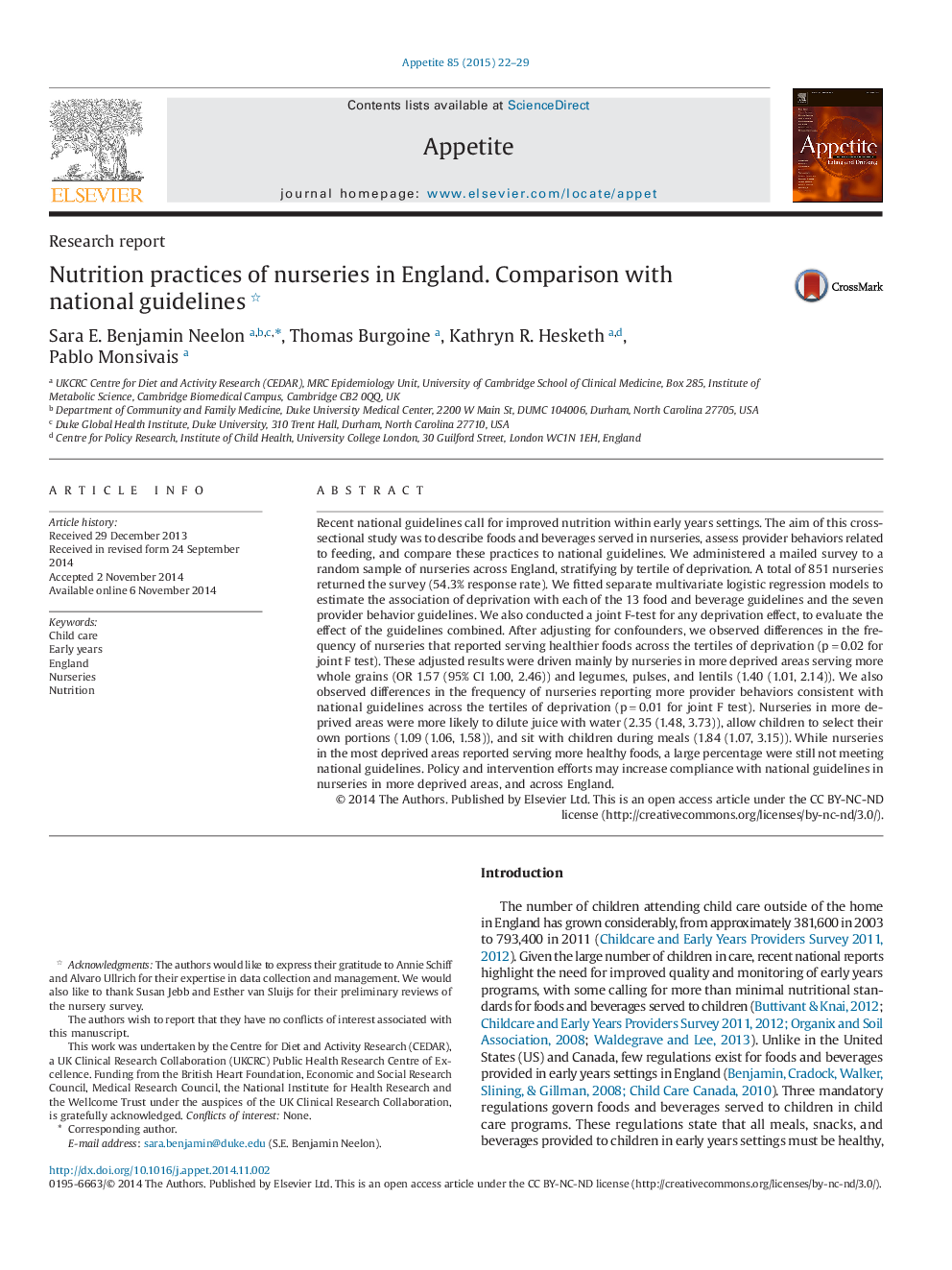| Article ID | Journal | Published Year | Pages | File Type |
|---|---|---|---|---|
| 7309351 | Appetite | 2015 | 8 Pages |
Abstract
Recent national guidelines call for improved nutrition within early years settings. The aim of this cross-sectional study was to describe foods and beverages served in nurseries, assess provider behaviors related to feeding, and compare these practices to national guidelines. We administered a mailed survey to a random sample of nurseries across England, stratifying by tertile of deprivation. A total of 851 nurseries returned the survey (54.3% response rate). We fitted separate multivariate logistic regression models to estimate the association of deprivation with each of the 13 food and beverage guidelines and the seven provider behavior guidelines. We also conducted a joint F-test for any deprivation effect, to evaluate the effect of the guidelines combined. After adjusting for confounders, we observed differences in the frequency of nurseries that reported serving healthier foods across the tertiles of deprivation (pâ=â0.02 for joint F test). These adjusted results were driven mainly by nurseries in more deprived areas serving more whole grains (OR 1.57 (95% CI 1.00, 2.46)) and legumes, pulses, and lentils (1.40 (1.01, 2.14)). We also observed differences in the frequency of nurseries reporting more provider behaviors consistent with national guidelines across the tertiles of deprivation (pâ=â0.01 for joint F test). Nurseries in more deprived areas were more likely to dilute juice with water (2.35 (1.48, 3.73)), allow children to select their own portions (1.09 (1.06, 1.58)), and sit with children during meals (1.84 (1.07, 3.15)). While nurseries in the most deprived areas reported serving more healthy foods, a large percentage were still not meeting national guidelines. Policy and intervention efforts may increase compliance with national guidelines in nurseries in more deprived areas, and across England.
Related Topics
Life Sciences
Agricultural and Biological Sciences
Food Science
Authors
Sara E. Benjamin Neelon, Thomas Burgoine, Kathryn R. Hesketh, Pablo Monsivais,
